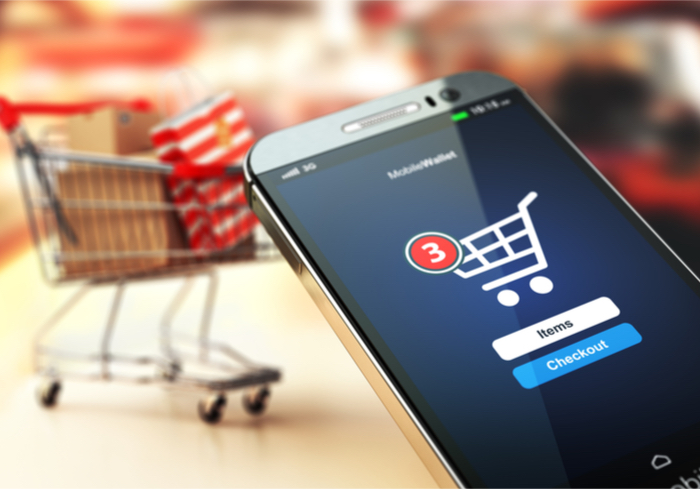
Holidays that call for shopping aren’t just limited to the traditional suspects – Valentine’s Day, Father’s Day, Mother’s Day, and the winter holidays. Retailers have gotten awfully creative with inventing their own “holidays” (or, really, just another excuse to shop).
The latest merchant to jump on the create-your-own-holiday bandwagon is Wayfair, which says it will create “Way Day” on April 25 with deals similar to those offered on Black Friday. The day, which will actually start at midnight, will offer special deals on 70,000 products ranging from décor to home improvement.
Wayfair Chief Merchandising Officer Steve Oblak told Chain Store Age, “We are looking to put a new retail holiday on the map that celebrates home. We have partnered with our suppliers to source the best deals on the most popular products across all categories of furniture, décor, outdoor living and home improvement, just in time for spring.”
During the event, Wayfair will unveil new deals every six hours. Consumers will be able to access the deals through their computers or mobile devices. In addition, those who have Wayfair credit cards will be able to accrue triple rewards on their purchases.
Wayfair is hardly alone, however, in creating a day dedicated to shopping on its platforms. Notably, Amazon offers its “Prime Day” promotion, while Alibaba has its own shopping holiday called “Singles’ Day.”
Prime Day
Amazon customers seem to be huge fans of Prime Day. In fact, last year’s Prime Day might have been the biggest single-day shopping event in the eCommerce site’s 20-plus year history – with Amazon reporting sales that were up a full 60 percent over the prior year’s Prime Day event.
It was an especially good day for the Amazon Echo and Echo Dot, which sold at rates three to seven times higher than they did during Prime Day 2016. And marketplace sellers fared well, too. According to reports, third-party sellers had unloaded 50 percent more items on the site by noon local time (7 p.m. Greenwich Mean Time) than in the same time frame the year before.
Sales estimates for last year were about $500 million on the day — and that was when Amazon was still measuring a day in 24 hours. By 3 p.m. PST, Amazon had posted the day was “on pace to be the biggest global shopping event in Amazon history,” with U.S. customers ordering more than 6,000 deals per minute.
Last year’s event also came with some new additions. Amazon embarked on a geographic expansion of Prime Day. Mexico, China and India joined the Prime Day lineup that already included 10 other countries. And Amazon extended the timeframe for Prime Day: The eCommerce retailer gave customers access to deals for 30 hours instead of the normal 24-hour window.
“Our members love Prime Day, and we have been thrilled by the response over the last two years,” said Greg Greeley, vice president of Amazon Prime, in a press release announcing the event. “It is inspiring us to make it even better this year for Prime members. Every part of our business is working to deliver more deals for a record number of shoppers.”
Singles’ Day
Beyond Amazon, Alibaba’s Singles’ Day proved to be a hit last year. What is Singles’ Day, you might ask? It’s Alibaba’s anti-Valentine’s Day, which the company popularized as a sales holiday. One may very well be the loneliest number, and Singles’ Day is aptly celebrated on 11/11.
Alibaba Group Holding, the Chinese eCommerce retailer, saw a gross merchandise volume of $25.3 billion for its 2017 Singles’ Day Global Shopping Festival. That represented an increase of 39 percent from a year before, and it showed that consumers are now enthusiastic about omnichannel retail more than ever before.
“More than US$25 billion of GMV in one day is not just a sales figure,” said Daniel Zhang, chief executive officer of Alibaba Group. “It represents the aspiration for quality consumption of the Chinese consumer, and it reflects how merchants and consumers alike have now fully embraced the integration of online and offline retail.”
But, from an interesting payments perspective, 90 percent of the total gross merchandise volume for the 24-hour shopping event was settled through Ant Financial’s Alipay. In a press release, the Chinese online retailer said that, in 2016, 82 percent of the gross merchandise volume was settled through Alipay, underscoring Chinese consumers’ growing preference for digital payments.
In last year’s shopping event, which dwarfs Black Friday and Cyber Monday in the U.S., 140,000 brands and merchants participated, with Alipay processing 1.48 billion total payment transactions – up 41 percent from the year before. At its peak during the shopping event, Alipay processed 256,000 transactions per second.
On the merchant front, Alibaba said 60,000 international brands and merchants participated in its Singles’ Day. What’s more, 167 merchants each generated more than $15.1 million in sales, while 17 merchants had sales that exceeded $75.4 million and six surpassed $150.9 million in sales.
Other Celebrations
Amazon and Alibaba aren’t the only retailers offering one-day sale holidays. Inspired by Amazon, Macy’s, Walmart and Best Buy decided to offer their own versions Prime Day. But, of course, they used different names. Macy’s, for example, went with “Black Friday In July” instead.
Who will be the next retailer to create their own holiday? Only time will tell, but the result might have a creative name.